Just Some Guy
1845 Gaylord House Museum, Hartland
January 2019
CT Museum #517
Hartland is a lovely town. Really and truly. The 17 (est.) people that live there will tell you the same.
And their one museum is lovely as well. I mean, c’mon. Pure New England here:
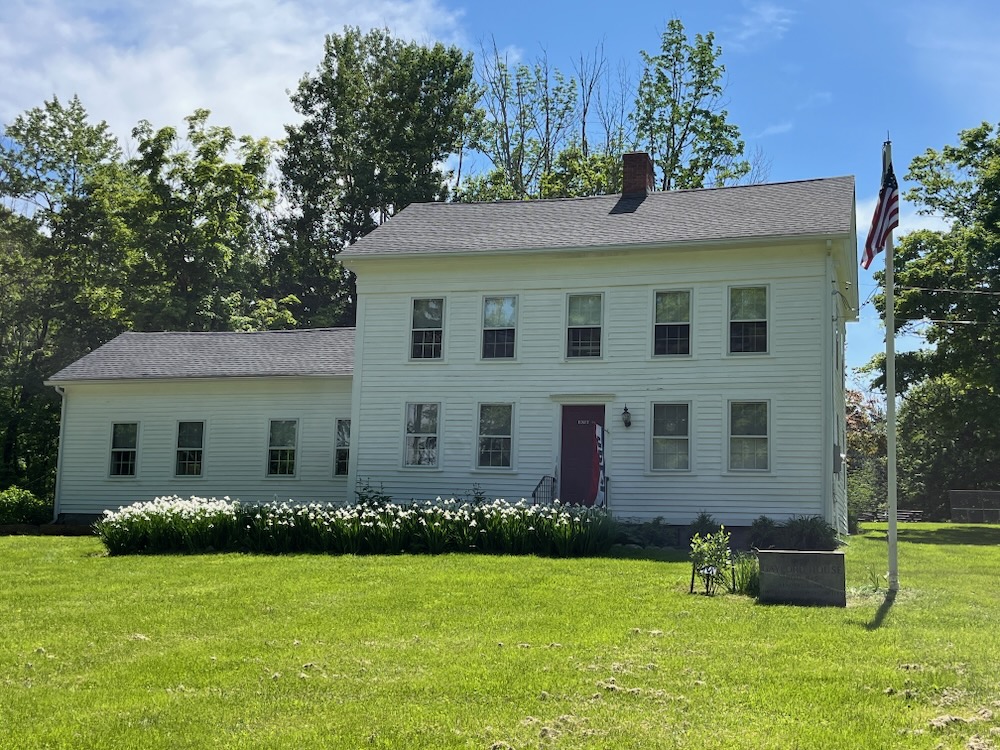
And, as is typical of rural New England towns, one needs to work hard to succeed – in this case, I’ve been trying to get to this museum for a couple years. Hartland’s Gaylord House Museum is only open for two hours on the first Sunday between the months of May to October. That’s 12 hours per year. Imagine my glee at being free in the afternoon of a first Sunday of a June! To Hartland we go!
(Funny aside, I was tooling down Route 20 and passed the museum, necessitating a turnaround. I did so at the small Hartland Library. In conversation with the two docents tending the garden at the Gaylord House, I mentioned this when discussing how East Hartlanders would have to drive all the way around the reservoir to hit up the library. One of the women remarked, “and it’s only open a few hours per week!” I had to laugh to myself standing in front of a museum that’s only open 12 hours of the year.)
And yes, I know. Small town. Volunteers. Lack of visitors. Heating/cooling costs. Totally understand. In fact, I understand more than probably anyone you know… remember, I’m the guy actually going to all these places.
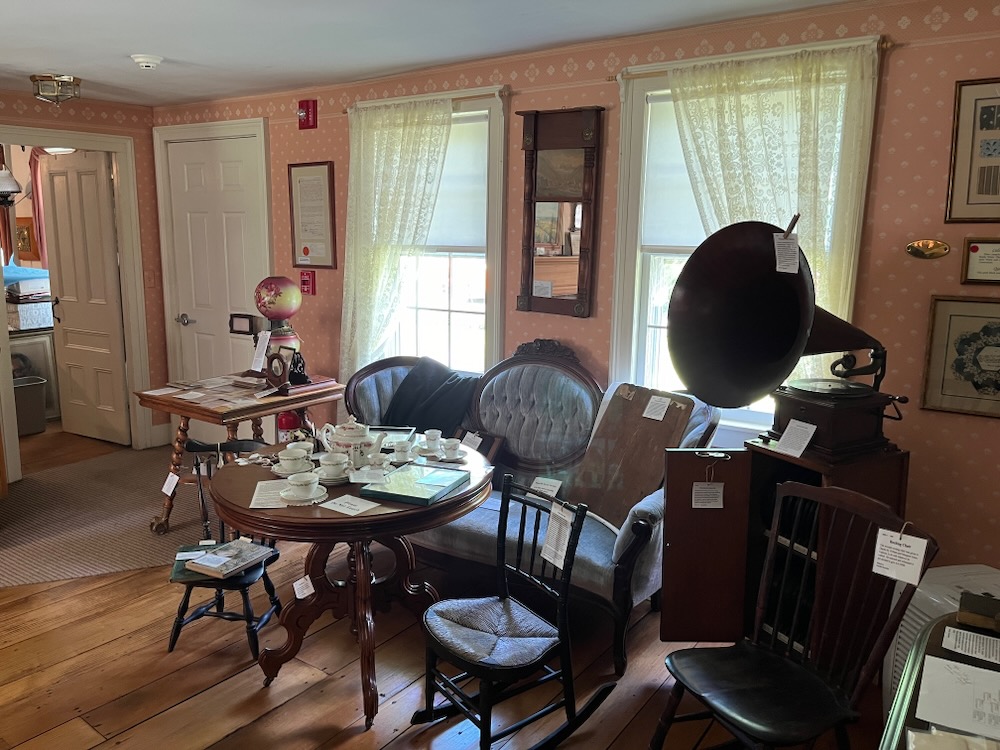
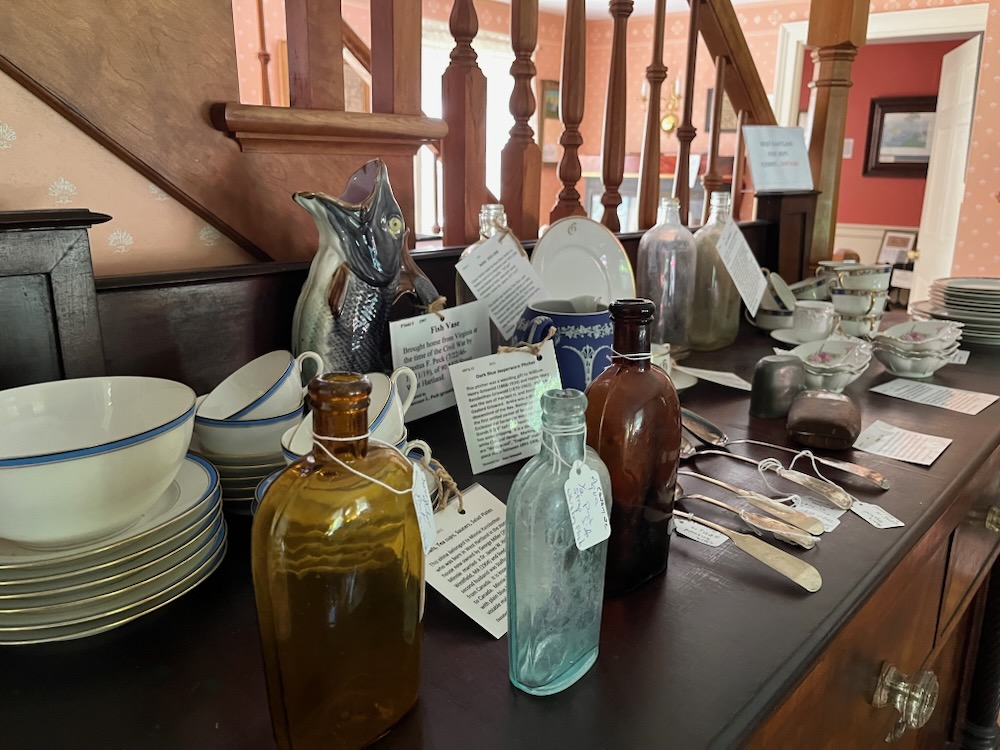
My introduction to the Gaylord House was great. Two friendly women who were over-the-moon that this (totally random) guy from West Hartford (“WEST HARTFORD?!”) just so happened to be “hiking” in Hartland and saw the “Open” flag and decided to stop in. Typical story.
They flipped on some lights and gave me the run of the place. Perfect.
I think one of them felt a little guilty about the lack of formal tour, so she pointed out a piece of the Charter Oak and a vase shaped like a fish. Okay. Cool. Then she went back outside to continue weeding while I poked around.
The six-room, two story house displays artifacts and furniture dating from the 1700’s. One room houses colonial tools for farming, woodworking, blacksmithing and more. The kitchen, formal living room, hallways and bedroom also have many artifacts that belonged to early Hartland residents.
Ah. Another town history museum that is a town history museum because it’s in good shape and was never torn down. If you are new here, this is very common. In other words, the Gaylord of Gaylord House fame is likely just some regular guy who lived here and most likely is responsible in some roundabout way for somehow ensuring the house was never destroyed.
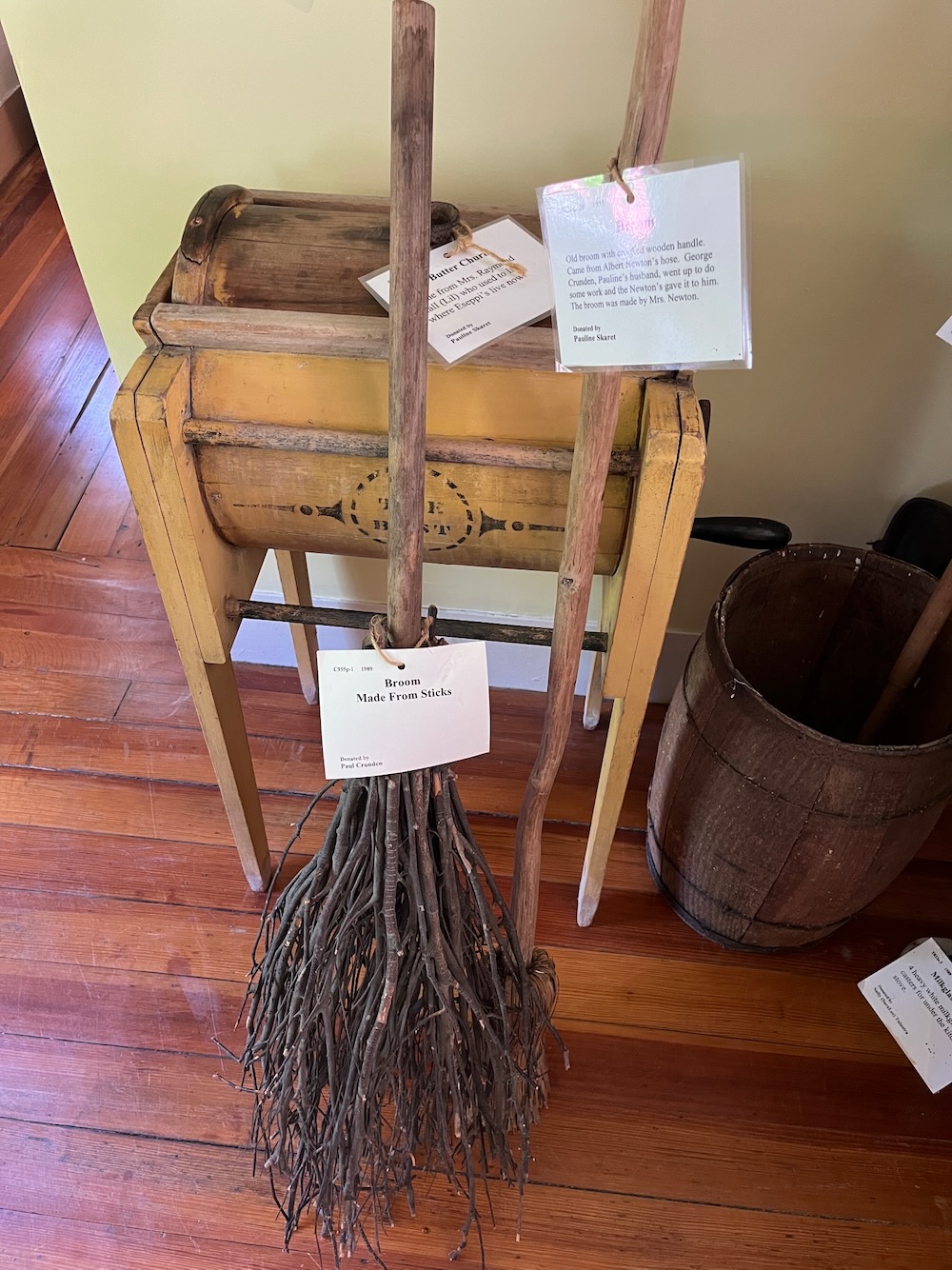
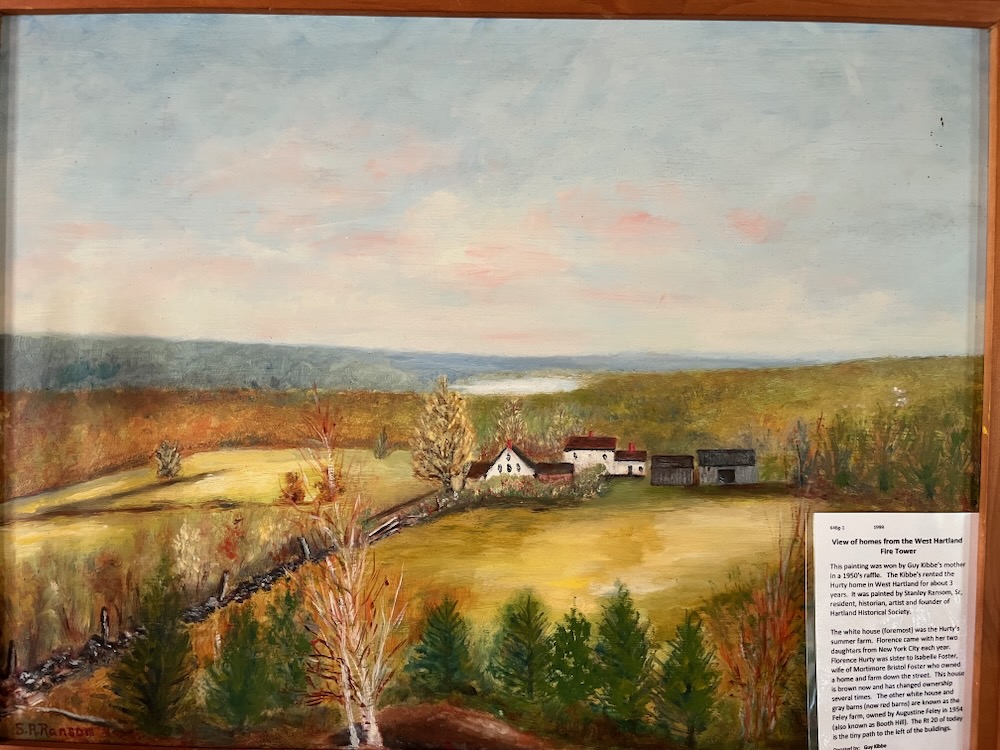
The Hartland Historical Society have spent an inordinate amount of time collecting, properly displaying, and labeling everything that exists under the Gaylord roof. I immediately understood why no tour guide was necessary here: Everything has a label and for those items that need it, a small explanation. My word, a lot of work has gone into this place. Tireless, volunteer work.
While it may only be open 12 hours per year, many more hours of work go into this place.
The first room was full of (mostly) tools; farming tools, woodworking tools, general all around tools. This is also where the piece of the Charter Oak is. I’m sure there are all sorts of caveats, but I was told this is a pretty rare piece as it’s just a chunk of the fabled tree rather than some trinket supposedly made from it. It has provenance too, from a Colt Arms worker who helped cut up the oak’s logs.
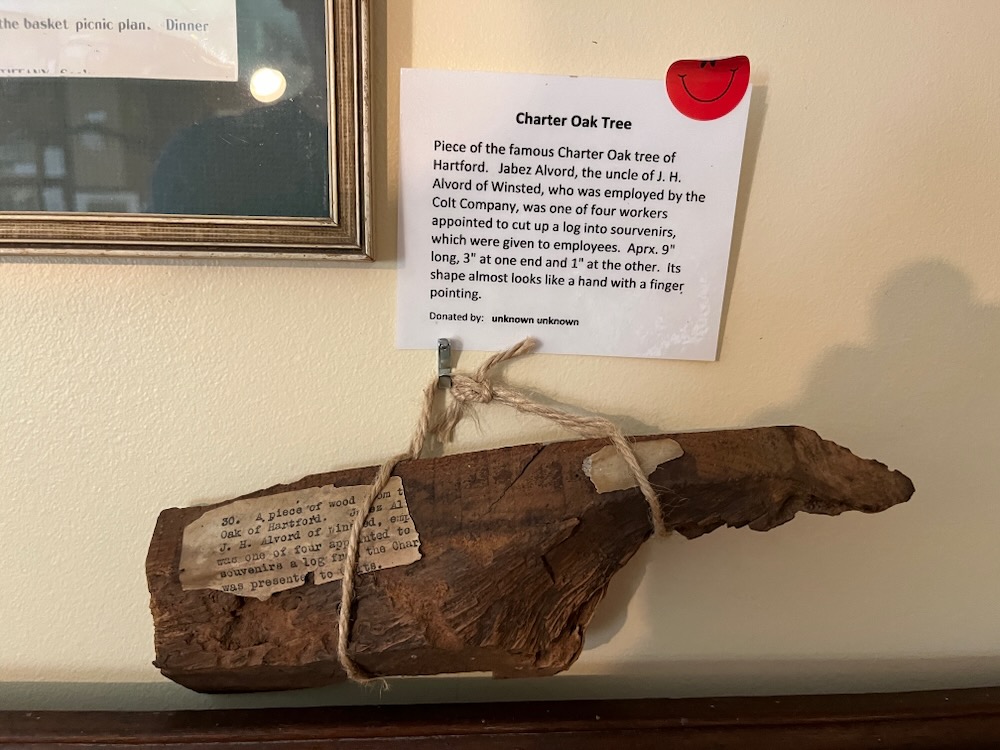
So that’s pretty cool.
The Gaylord House was built in 1845 by Elias Gilman, a Hartland native and noted architect, and was deeded to Giles Lawton in 1854 by Samuel Gilman. Giles Lawton deeded it to George Cornish in 1873, and Eliza Cornish deeded it to Edward Arthur “Art” Gaylord in 1891. Art was the great-grandson of the Rev. Nathaniel Gaylord, who was the first minister of the West Hartland Congregational Church and served in that capacity for 59 years.
In 1930 Edward A. “Art” Gaylord sold the property to the Metropolitan District Commission of Hartford, Connecticut, with an agreement reserving the right of his family to live out their natural lives in the house. He married Hattie E. Howd in 1881 and was active in local politics and served at different times as Selectman, Postmaster, Justice of the Peace, and Representative to the General Assembly. Art and Hattie died in 1945 and are buried in Barkhamsted. Irene Shepard, granddaughter of Edward A. Gaylord, was the last person to occupy the house, which became vacant prior to 1980.
Oh hey, look at that. I was right. At least about Gaylord just being some guy. I’m not saying he wasn’t a good guy, but I’m sure if he were alive he’d be like, “there’s a museum bearing my name? Why? I was just some guy.”
And you know what Mr. Gaylord? I hear you. I’m just some guy too, but people ask me to speak to crowds of people about my hobby. Heck, a magazine once dubbed me Mr. Connecticut if you can believe that. Now let’s go look at what your kitchen might have looked like in 1900.
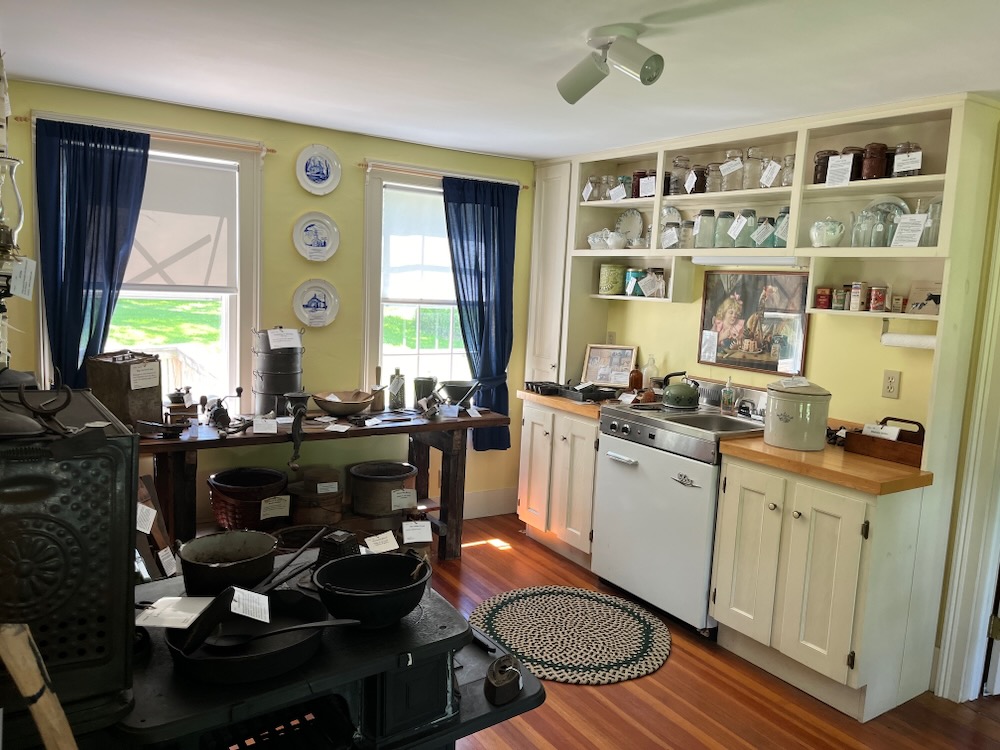
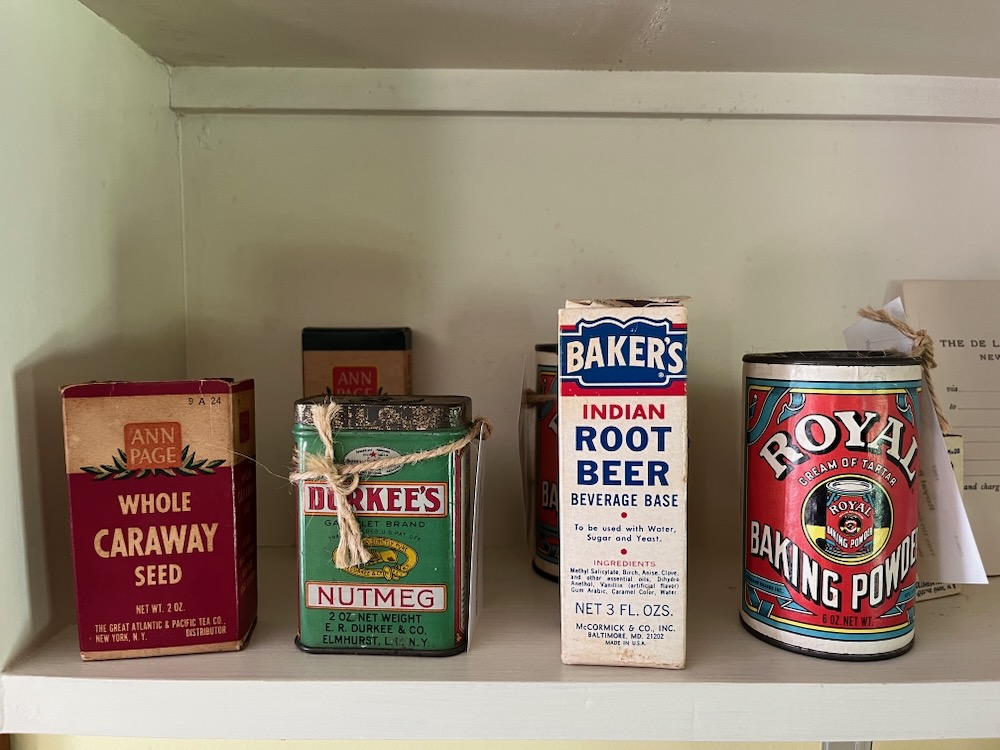
The House does contain an impressive collection of old stuff. And it is all displayed quite nicely. Oftentimes in these far-flung house museums, stuff is just kind of thrown about. Not here. It is clean and and organized. Nice.
Stanley A. Ransom, Sr., organizer of the Hartland Historical Society, and the Rev. Charles Stipek appealed to the Commission to save the house from being razed. On September 17, 1981 an agreement between the M.D.C. and the Town of Hartland leased the 2.5 acres and building for 50 years for $1.00. On September 23, 1981 the Town of Hartland gives HHS the use of the building and land for $1.00. In 1991 the Town of Hartland grants HHS, Inc. ownership of building for $1.00.
The Executive Board of the Society and members sought advice from Paul Crunden, Hartland’s well-known builder, who said the building could be restored for $50,000. It was a unanimous decision to take on the project.
When the project began, the roof, windows and doors had to be replaced. The staircase was restored to the original location in the house, and the interior had to be completely refurbished. The old floors were saved as well as most of the original trim. Under the supervision of Paul Crunden and Joseph Alicata, architect, the work took five years to complete with young and old alike dedicating their time and energy to the cause. The renovation was successfully completed on schedule within the projected budget of $50,400. Money was raised by raffles, dinners and donations from townspeople.
The Gaylord House was dedicated on August 12, 1989.
My goodness, how quaint. I envision those red, white, and blue buntings and boater hats and hot dogs and popcorn. Right? I can almost guarantee it.
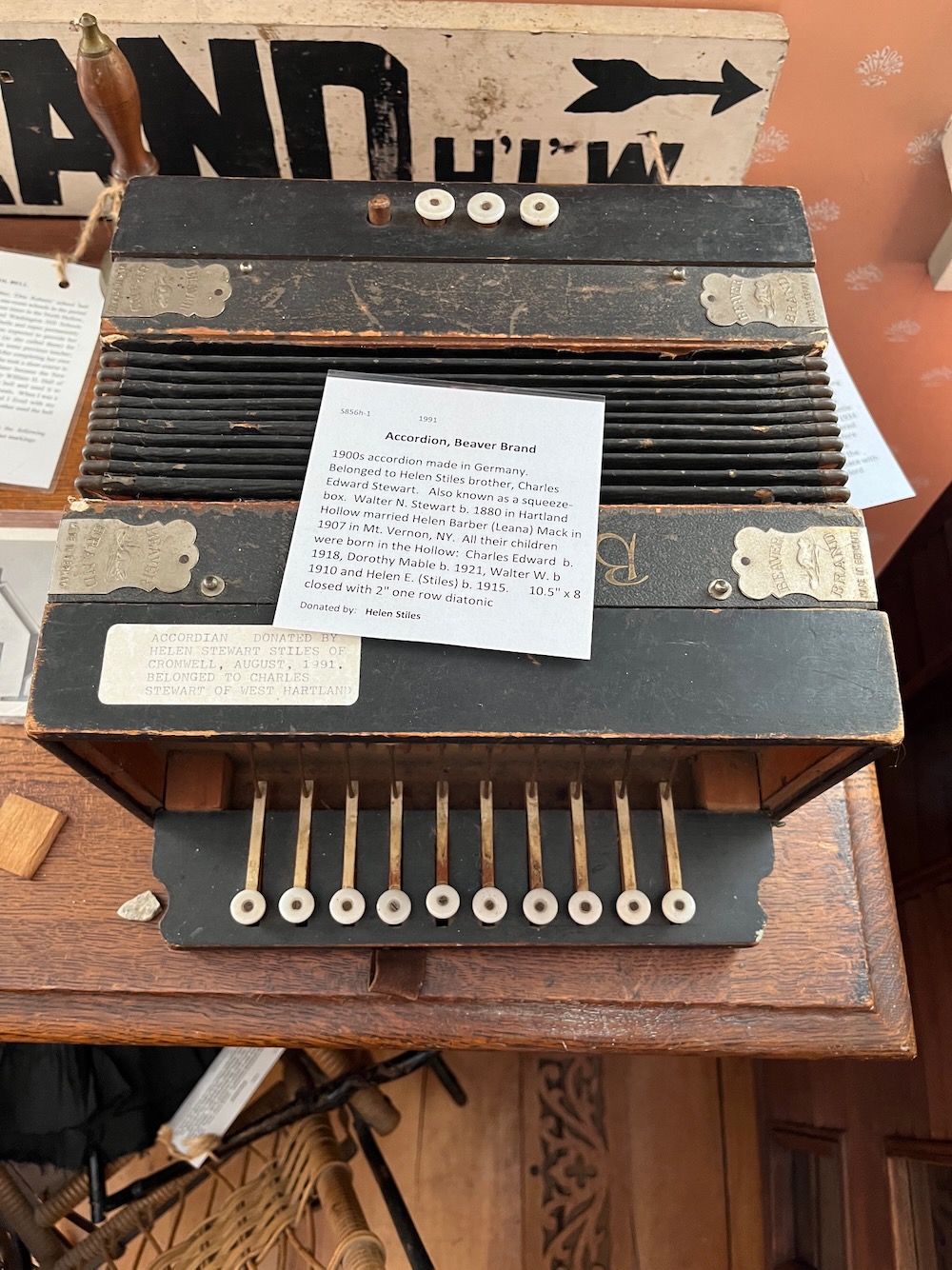
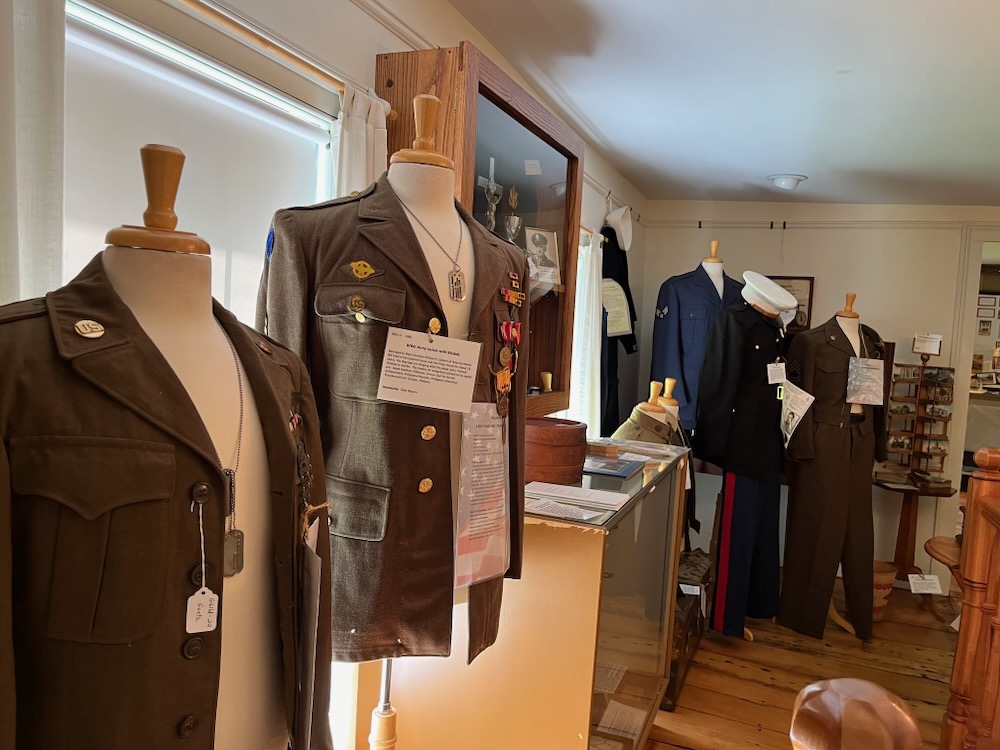
I don’t know Paul Crunden, but apparently Hartland does. He and his crew did a great job; honestly, the Gaylord House feels like you could move right in tomorrow. Again, this is rarely the case at these types of museums, trust me.
I went upstairs, taking in all the historic photographs of Hartland luminaries of days gone by. The rooms and halls were filled with just about every random antique locals deigned to donate over the years. There is order to it, of course, but I’m not sure the Historical Society said no to anyone.
Ah yes, the child’s bedroom with all the creepy old dolls:
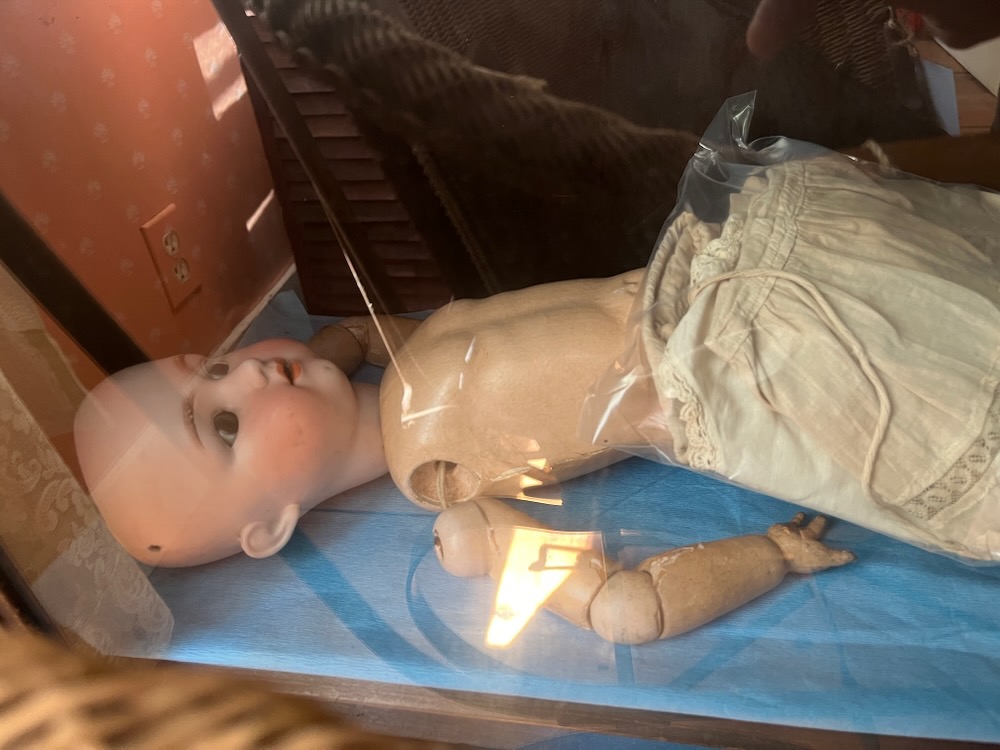
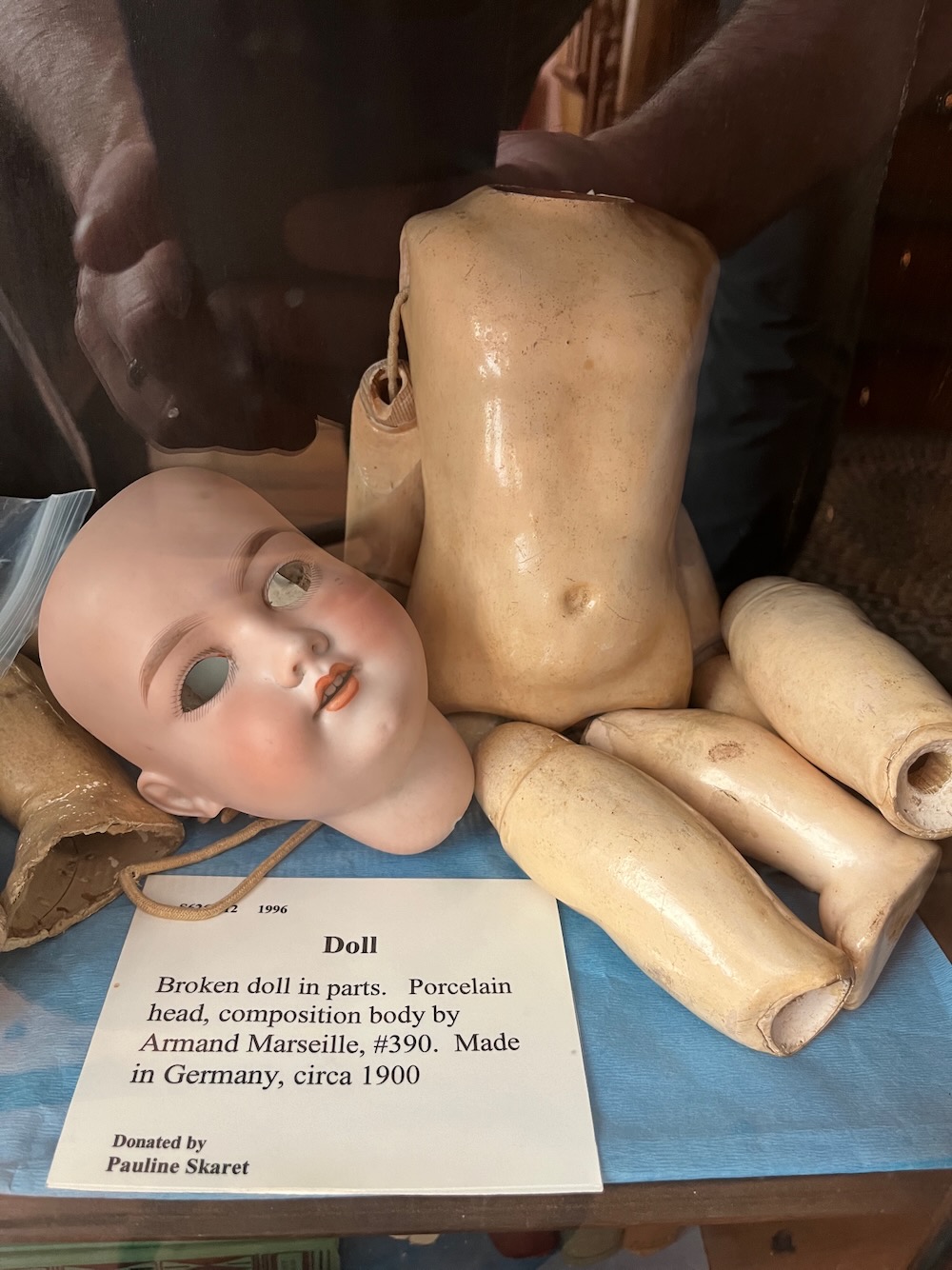
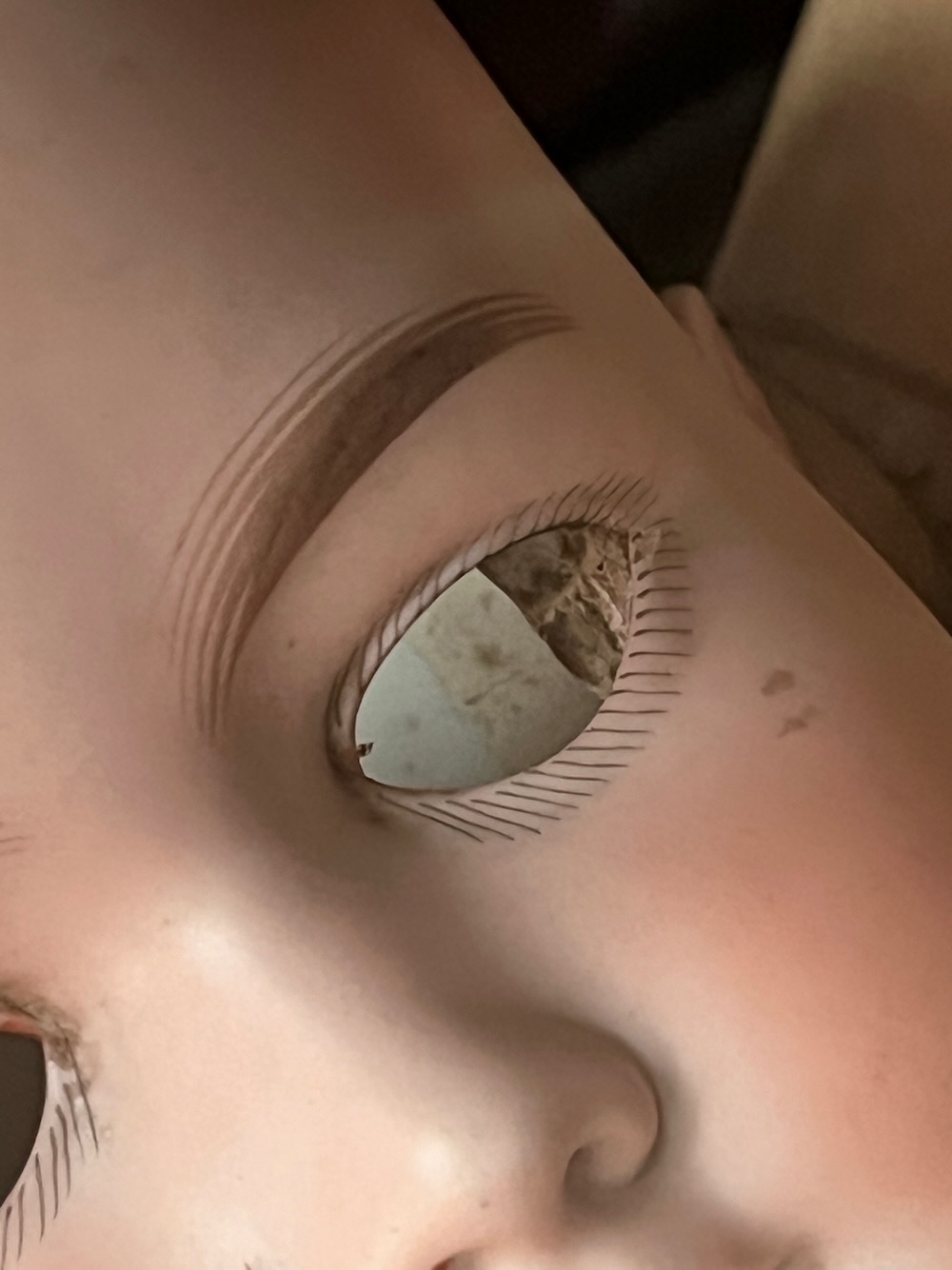
This hobby never gets easy. Let’s play a game. Aside from creepy old soul-stealing dolls, what else does every self-respecting historic house museum have?
You can do this. If you’ve been to a few, you know this…
A spinning wheel! Correct:
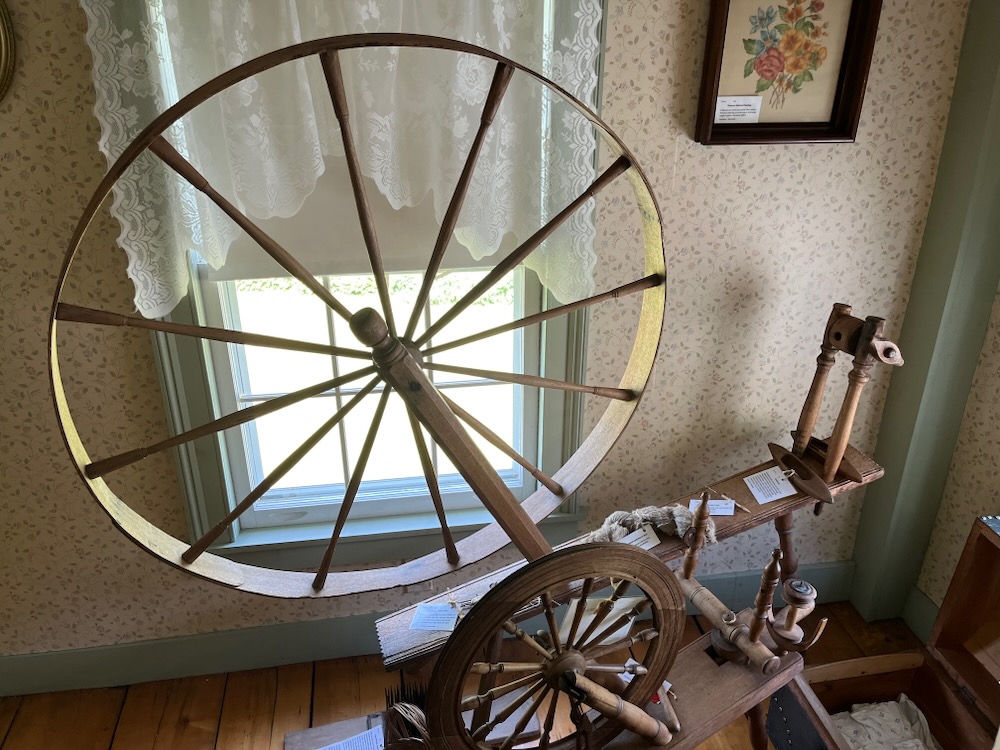
A “sleep-tight” bed with chamber pot! Correct:
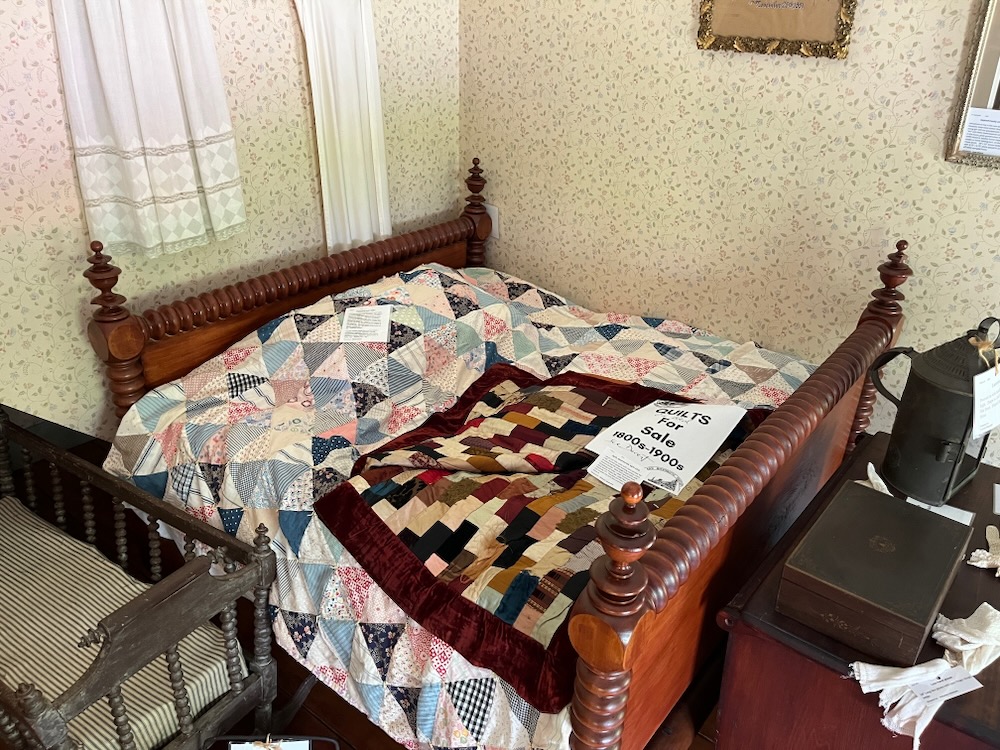
A cut-away of original construction with lath and plaster! Correct:
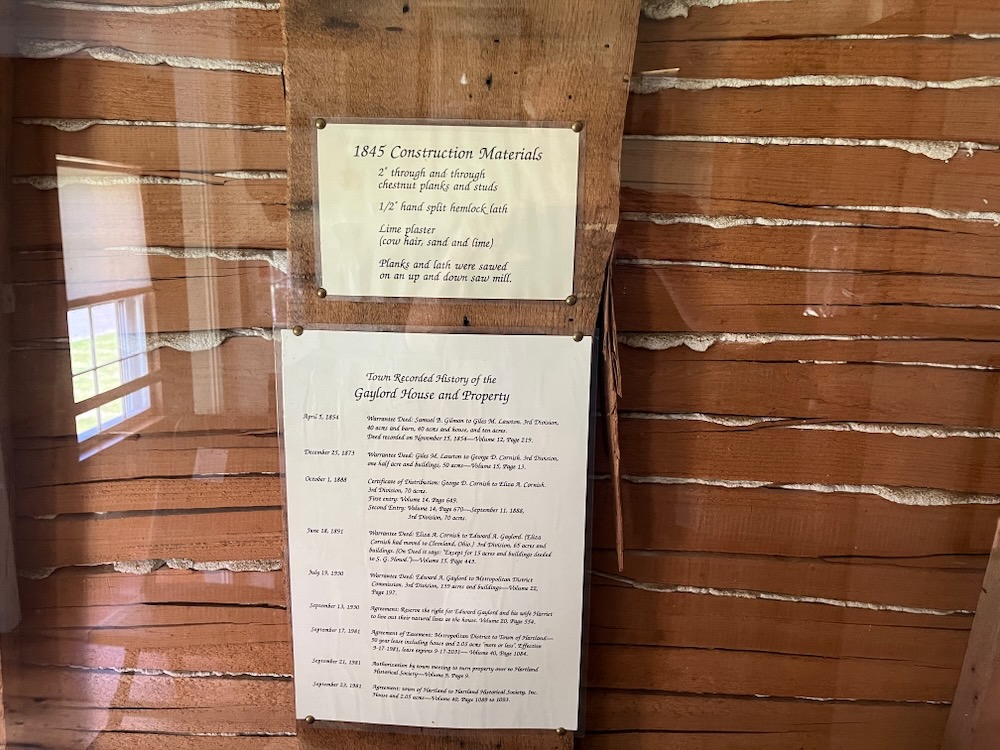
A piece of “the old post office!” Correct (and I have no idea why, but it’s true):
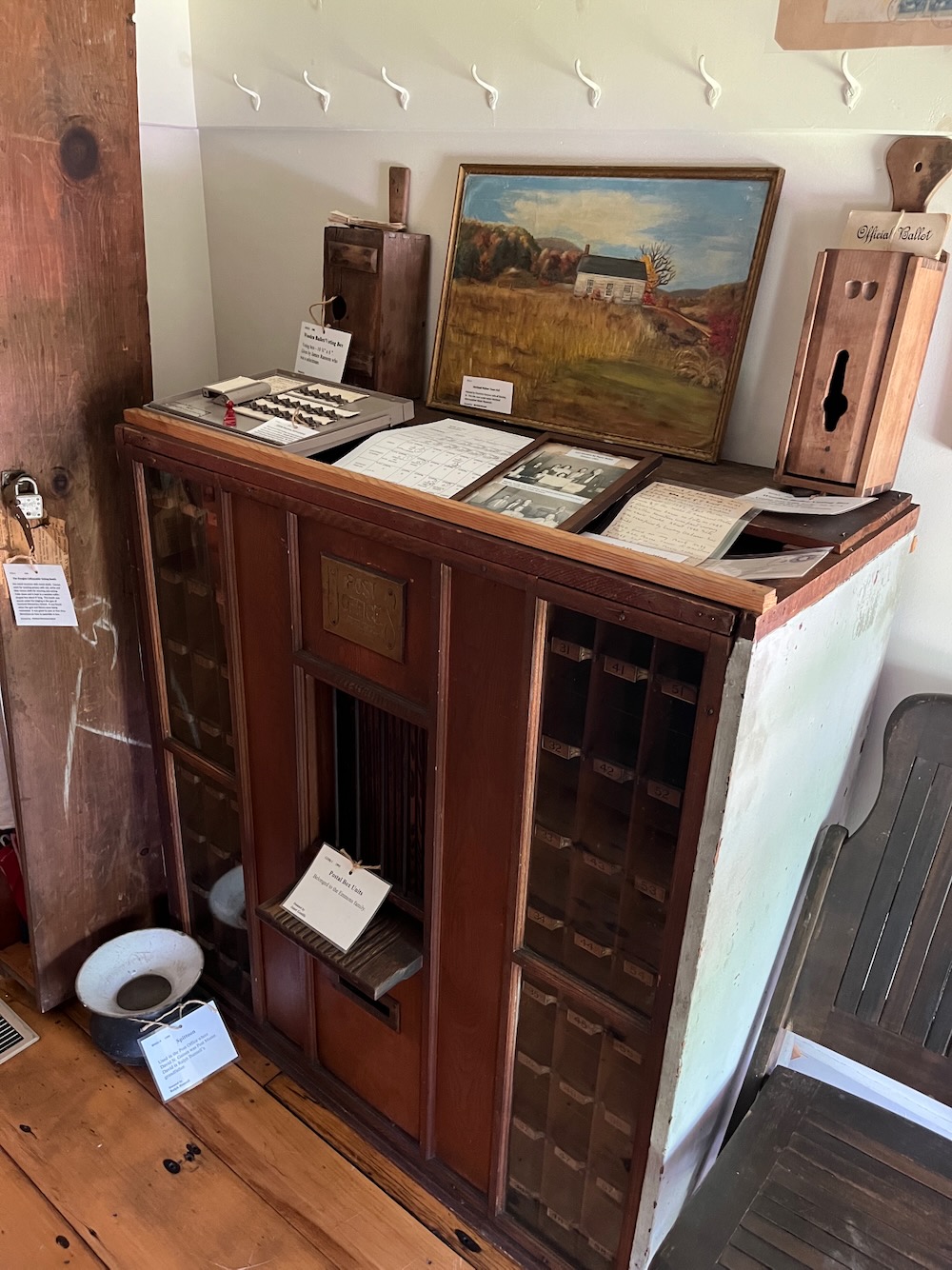
Hartland nailed it. Well done. There was a temporary exhibit all about Hartland fire fighting through the years. I can’t pretend that I am all that interesting in Hartland volunteer firefighters through the years, but for those that are in 2024, they get an entire room upstairs with a ton of history and artifacts.
I came across a display case that wasn’t really highlighted too much, but it’s assuredly my favorite display in the entire house. It’s just a collection of totally random, sometimes dubious, … stuff. I love it. It’s all from the collection of some guy named Frank Case.
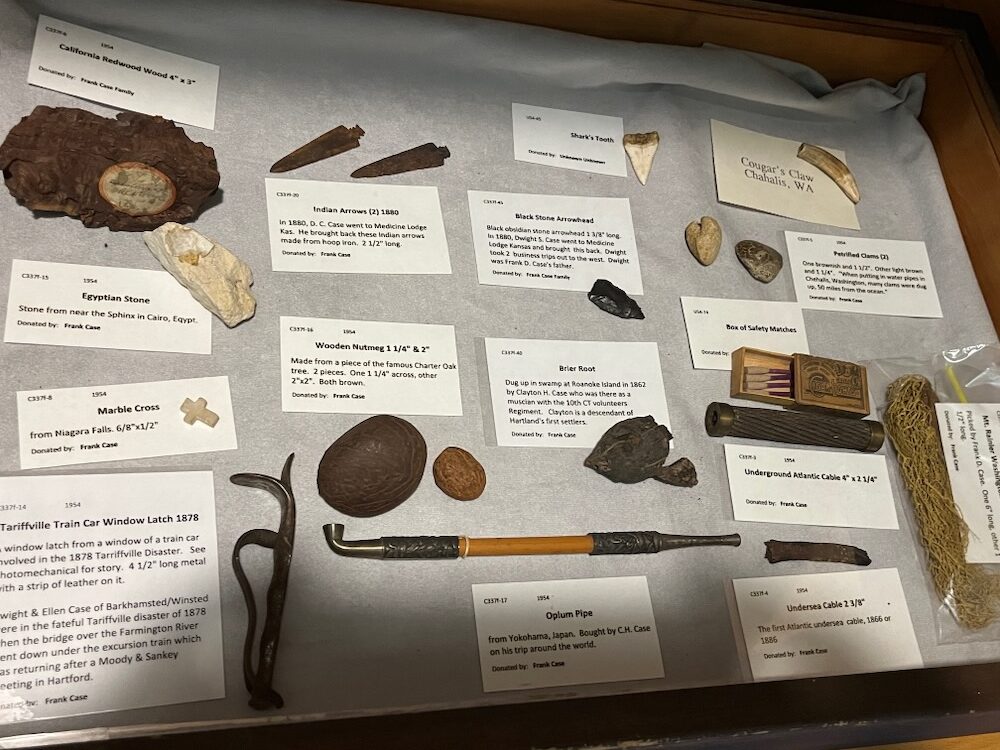
Frank Case, you are a treasure… with your “wooden nutmeg carved from the Charter Oak (yeah, right), stone from Egypt, 1878 train car latch collected after a tragic accident when a train fell into the river (ok, but why?), a piece of undersea cable, a cougar’s claw, some Mt. Rainier moss, some petrified clams, an opium pipe from Japan… Love it. Thank you, Frank Case.
And that’s about it, my friends. Of course I didn’t cover everything here, but that would be boring. After exiting, I had a fairly long chat with the two women outside tending the garden. We talked about Hartland hiking and West Hartford restaurants. I said a couple times how much I enjoy the drive around the reservoir from East to West Hartland. I was asked if I stopped at “The Overlook” on my down the western side.
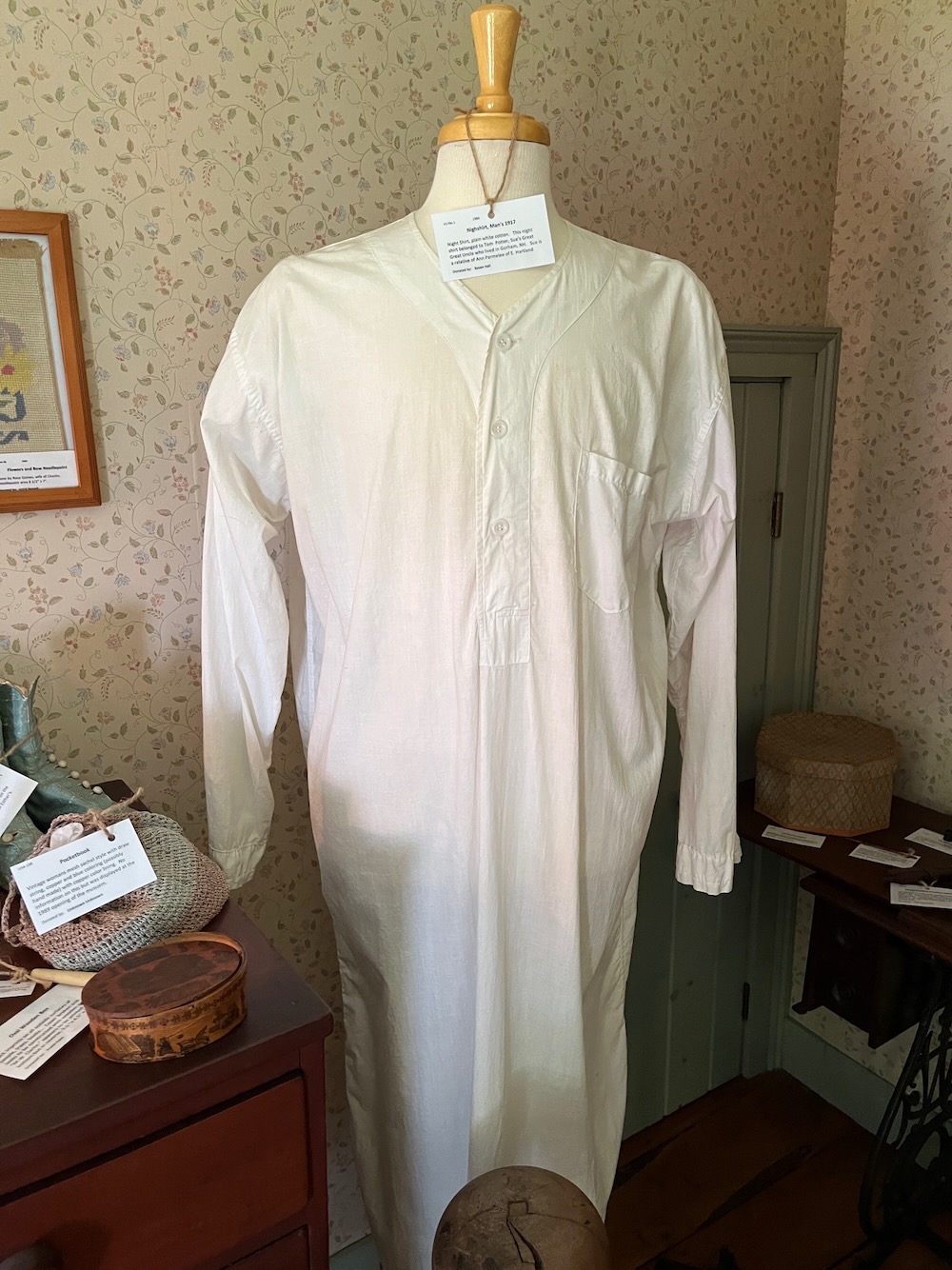
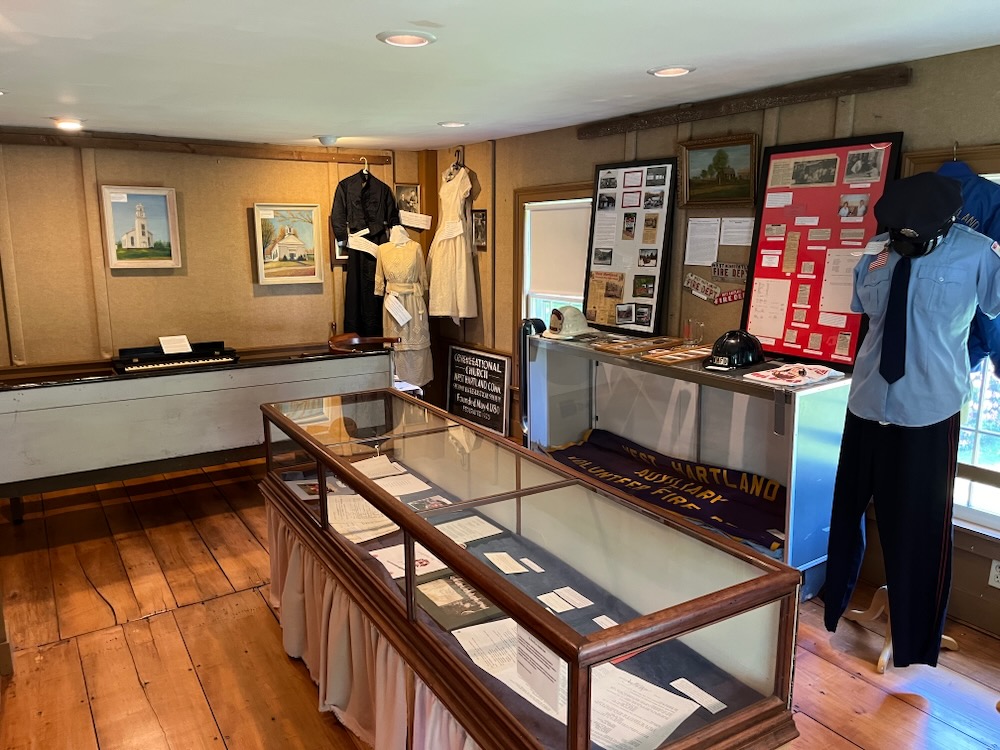
I had not, but I saw what appeared to be a well-beaten herd path to what I assumed was a view of the northern half of the Barkhamsted Reservoir.
I was then regaled with a story that came out of nowhere. “Remember there was that guy who went there to kill himself but only succeeded in blowing his face off?”
Wow. Okay. No, I was unaware, but a quick search and it’s true. It’s a terrible story from 2021 and a really weird way to end this page, but history is history:
TORRINGTON – A 44-year-old New Hartford man who shot himself in the head and fled police following an incident of domestic violence in his home in June posted a $150,000 bond following his arraignment at Superior Court on Monday.
That sentence says he shot himself in the head and then fled police.
Police say Bryan Neher, a long-haul trucker, used a metal grinder to gain access to a gun safe where his wife kept a Sig Sauer semi-automatic handgun on June 20. Neher had demanded the key, which his wife refused to give him after she said she wanted to end their 21-year marriage.
A teenager in the household called police after Neher turned violent, poured a fish tank over his wife and the teenager, and threatened to kill them all.
He grabbed the safe containing the gun and fled, at one point giving a trooper the finger when he failed to pull over. Police gave chase along Routes 219 and 318, but called off the pursuit near the Hartland School after Neher’s driving presented a risk to others, police said.
Spotted again later that night, Neher had a gun to his head at an area known as the “overlook” along Route 20 in Hartland. He was seen standing near a wood line when he moved the gun from his head and pointed it at a New Hartford police officer. He refused to put the gun down, police said.
I stopped at “the overlook” on may home from the museum.
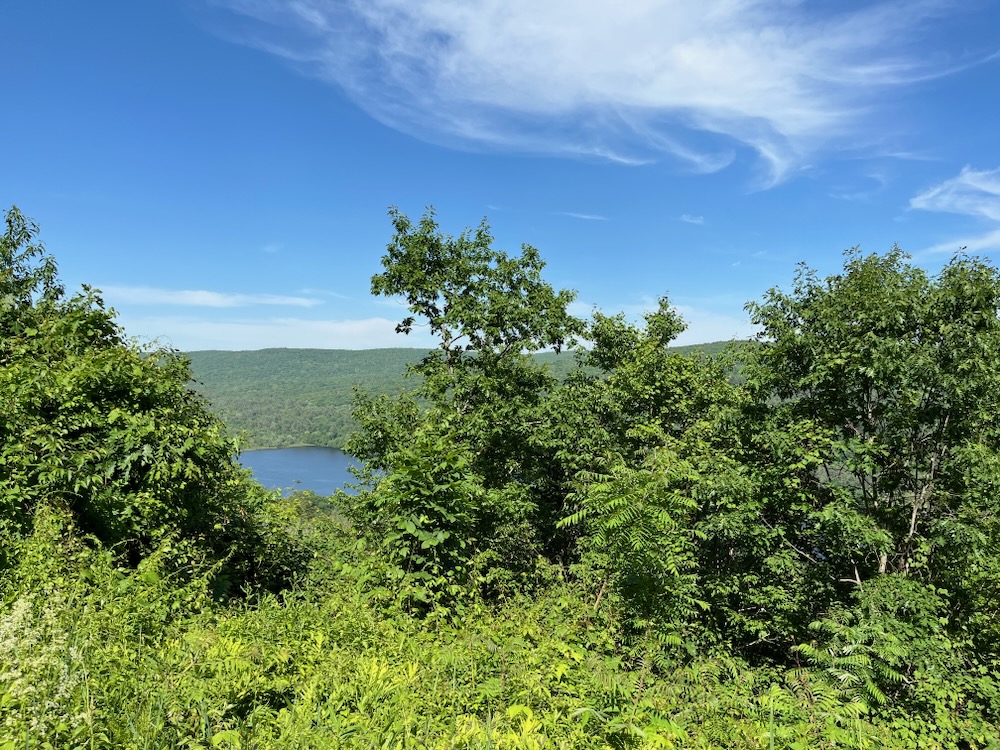
The Overlook, which the town has purposely made less attractive than in the past.
“It’s you or me,” he said, according to police documents.
Two shots rang out, then Neher emerged on his knees and dropped the gun. He had wounds to his chin, mouth and forehead caused by the gun and was flown by Life Star helicopter for medical treatment.
Neher is a military veteran and a felon and as such cannot legally own a firearm. In 2001, he was convicted with two other men of stealing furniture from the Hitchcock Chair Company in New Hartford.
Bro. Not the Hitchcock Chair Company.
Okay, sorry. I had to share that crazy story.
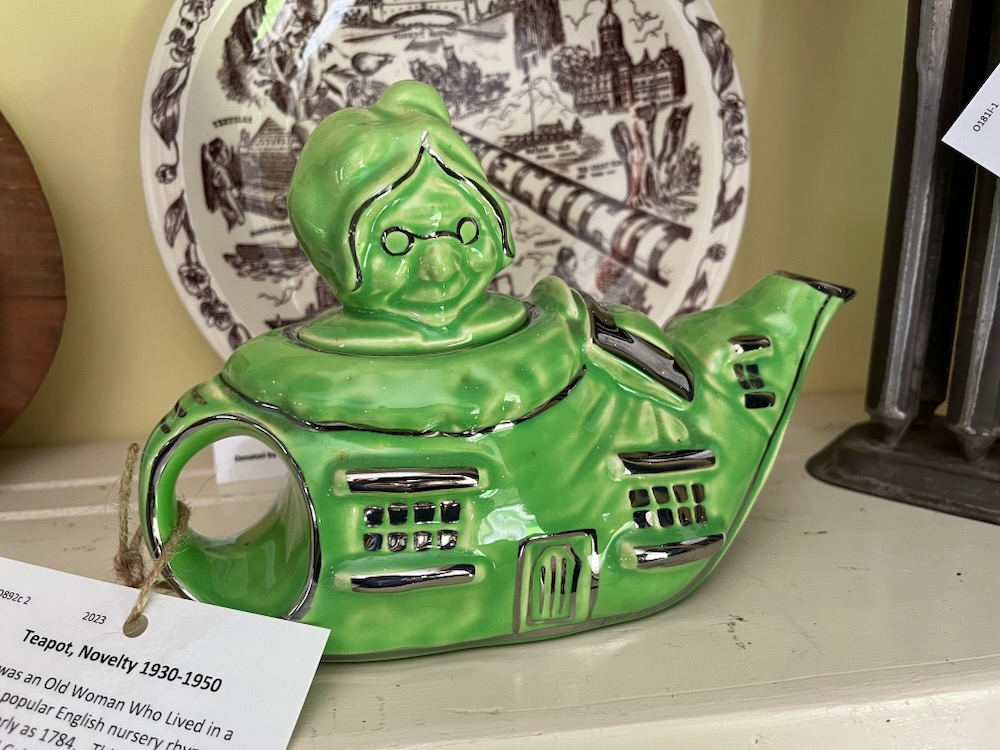
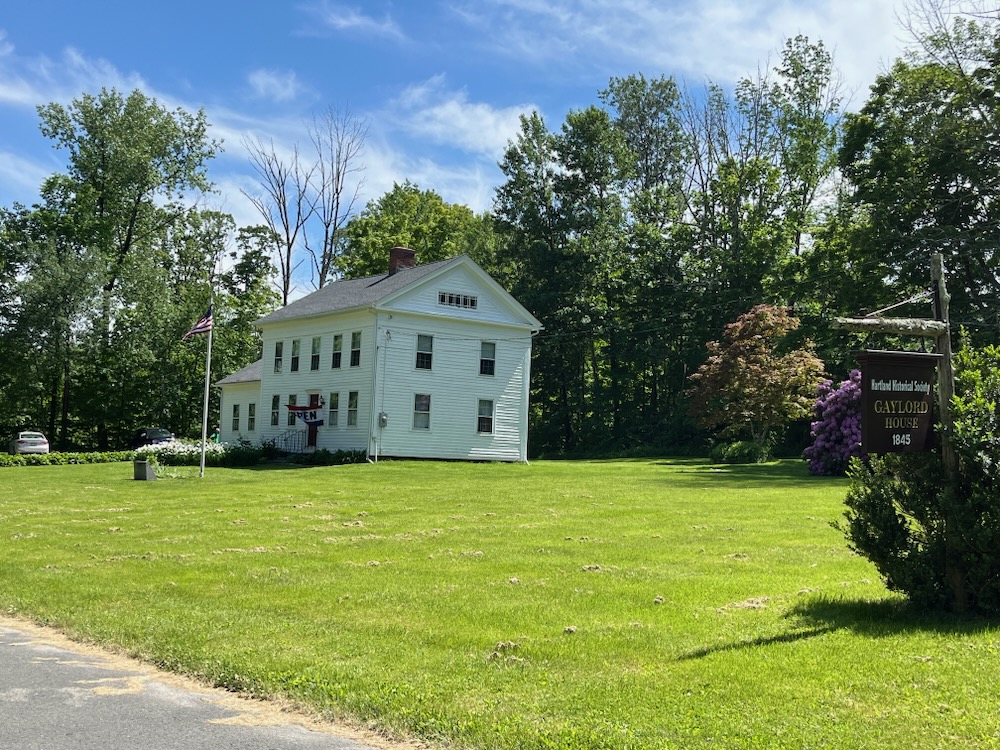
![]()
The Gaylord House Museum
CTMQ’s Museum Visits

 Monica Cegelka says
Monica Cegelka says
June 12, 2024 at 9:25 amSteve, being one of the talkative docents you met that day, I want to say how much we enjoyed your visit to The Gaylord House. I have never been so surprised at a fb post in my life. You are like the stealthy restaurant critic whose identity remains a secret! Your compliments mean even more because we had no idea your hobby was to review local historical society museums. You were our only visitor that day, but, wow-what a difference you have made by letting people know about our lovely museum. We do have dedicated volunteers, but our president/curator, Joanne Groth, deserves most of the credit for anything that has to do with The Hartland Historical Society and especially with The Gaylord House. Thank you, Steve, for this wonderful surprise article. I hope you will return someday.